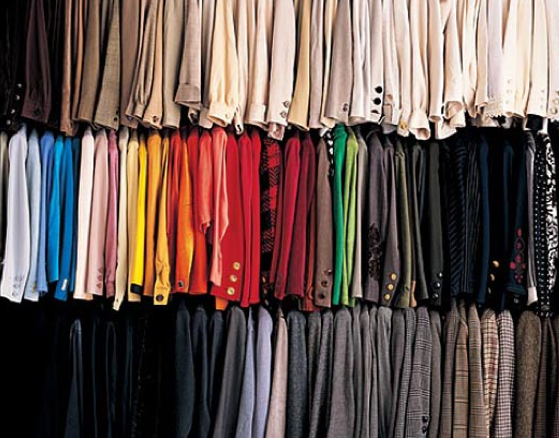
THE POWER OF COLORS
The Power of Color
The colors of the clothes you choose to wear have an effect on your brain. Psychological research identifies the various benefits of colors. Different colors and shades affect the development of the brain; creativity, productivity and learning. This is due to the energy the brain absorbs from the light produced by the color.
Physiological responses to color
An experiment was conducted in 1875, using colored glass, walls and furniture in various rooms. The colors of the rooms used in this experiment were red and blue. A male participant who had previously refused to consume any food, was placed in the red room. He developed the feeling of hunger and started to crave food after being placed in the room. A previously aggressive participant who was placed in the blue room, began to calm down within an hour. This experiment helped prove physiological arousal colors had on the brain. The color red was proven to increase one’s appetite and the color blue helped to soothe one’s mind and emotions.
And in 1957, red was discovered to have a more stimulating effect on visual activity and autonomic nervous system functions in comparison to blue. The color was then used in hazardous road signs to gain attention and signal danger.
In 1942 German neurologist and psychiatrist Kurt Goldstein carried out an experiment to study the positive and negative effects of color on the brain. He suggested that different physiological responses could be evoked by different colors. He identified that colors such as red, orange and yellow helped energize due to having longer wavelengths. Colors with shorter wavelengths such as green, blue and purple were found to help relax the brain.
Psychologist Rikard Kuller demonstrated that colors affect the entire central nervous system as well. EEG and pulse measuring systems showed that men and women react differently to colors. The brain releases a hormone that controls emotions, energy levels as well as other cognitive functions. During the study conducted on men and women, it was proven that color had a strong influence on the emotional perception of objects and heart rate levels.
How can you influence your mood as well as the way in which others perceive you by the colors you choose to wear?
RED, ORANGE and YELLOW
As mentioned already, warm colors such as red, orange and yellow provoke feelings of joyfulness, hope and confidence. These colors have also proven to make people more hungry as it has an effect of speeding up the levels of metabolism.
BLUE and GREEN
Blue and green have proven to be soothing to the mind. This is the color many opt to wear to university and job interviews. Pastel shades and cooler tones are commonly used for children’s’ clothing items, products and room décor, since these colors have a sense of neutrality to them which creates a safe, peaceful and relaxing environment.
PURPLE
The color of wealth was reserved to only be worn by royals in the past. It carried a sense of sophistication and success. This fantastic color is the fusion of red and blue, allowing it to possess qualities of both warm and cool colors. Purple is therefore frequently used to greatly influence creativity. Different shades of purple affect the brain in different ways. Lighter shades of the color have proven to have similar effect as blue. And darker shades of purple have shown to induce feelings of sadness and irritability, with too much exposure to the color leading to bitterness, frustration and anger.
WHITE
This color has repeatedly been used at weddings, hospitals, schools and funerals. White holds a sense of order and uniformity, which brings upon a sense of calmness, security and hope.
BLACK
Black symbolizes power, luxury and elegance. And can be used as a method of elevating status and maintaining an image of professionalism. Black is equally daring and bold as it is simple and neutral, and can therefore appear as mysterious.
In certain contexts and cultures the color black can also refer to mourning or sadness. But many cultures also strongly believe in black being the color of misfortune and sadness. It is used time and time again as a mourning color to wear at funerals.
The clothes you wear daily have a strong influence on your moods as well as the way in which others perceive you. And the colors you choose to wear can create the desired image of yourself that you want, allowing you to either stand out or blend into a social setting.
By Kisavi Jayawardene


